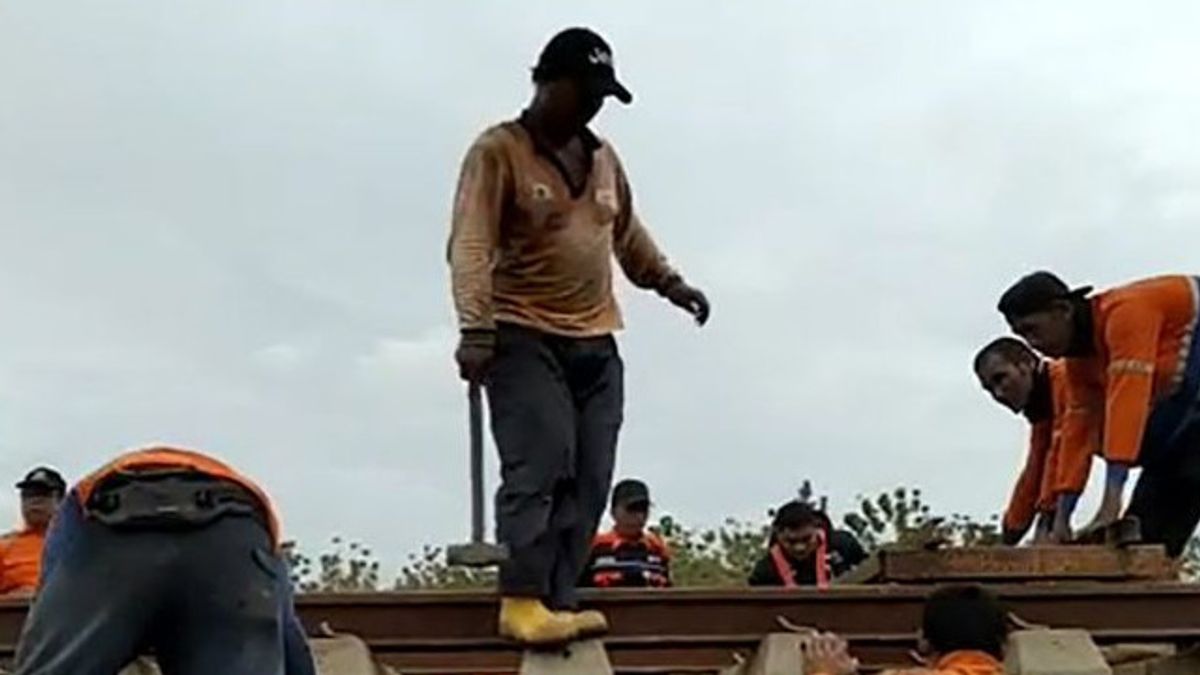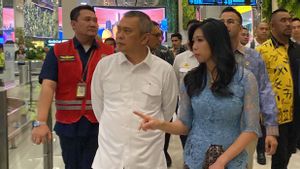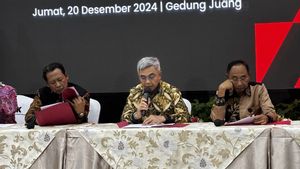JAKARTA - The land at the subsidence location and the movement of Maos-Sikampuh and Jeruklegi-Kawunganten plots of land, Cilacap Regency, Central Java, is included in the expansive type, said Public Relations Manager of PT Kereta Api Indonesia (Persero) Operational Area 5 Purwokerto Krisbiyantoro.
"Expansive types of land if they are bored or have high water levels will collapse their support capacity," he said in Purwokerto, Banyumas Regency, Monday, October 10.
According to him, the collapse of the support capacity could be caused if on the left or right of the railway line, including the body of the rail road (line) there was stagnant water or around the field or rice fields.
In addition, he said, the collapse of the support power could also be caused by high rainfall.
"This is what happened at the location of Maos-Sikampuh and Jeruklegi-Kawunganten plots on Saturday (8/10) in the morning," he explained as quoted by Antara.
Furthermore, Krisbiyantoro said PT KAI (Persero) had taken emergency measures at the subsidence site by stockpiling sacks filled with materials in the form of crackdowns.
Furthermore, the pile of sacks containing the material is given a buffer from the wooden pading so that it is stable, then filled with bulk receipts to fill the existing space.
"Initial handling can be carried out by train operations with limited speed. Furthermore, it will be strengthened by iron support (H-beam) and on the right and left sides of the train line, a talut is made with iron material (shita)," he said.
He said that the permanent handling of the subsidence location would be carried out by the Maintenance and Operation Infrastructure Work Unit (Satker IMO) of the Railway Engineering Center which would first measure the strength of the soil contours at the subsidence location.
According to him, PT KAI (Persero) Daop 5 Purwokerto has placed material equipment on standby (AMUS) in Kroya, Purwokerto, Prupuk, Sidareja, and Kutoarjo, while the location of the kricak reply depot is in Karangsari (Banyumas Regency).
"Especially yesterday's subsidence, the supply of kricak reply was imported from Banjar which was included in the PT KAI (Persero) Daop 2 Bandung area," said Krisbiyantoro.
Heavy rain that occurred from Friday (7/10) afternoon to Saturday (8/10) caused the train lanes in the Jeruklegi-Kawunganten road to experience land subsidence or subside at several points, including at KM 367+6/7 and KM 372+400 and KM 392+8/7 on the Sikampuh-Maos road plot.
This condition had an impact on the journey of a number of southern Javanese trains that experienced delays due to being stuck at several stations as well as speed restrictions when crossing the subsidence points and movement.
After handling these points of subsidence and movement, the speed of the train which was originally limited to 5 km/hour was gradually increased to 40 km/hour, then 60 km/hour, and normal speed after the handling was completed.
Based on data on Monday (10/10, at 09.00 WIB, the subsidence points and the finished gogosan consist of KM 370+8/9, KM 374+0/1, and KM 375+5/6, so that trains can pass at normal speeds or without speed restrictions.
Meanwhile, KM 366+5/6 is still limited to a maximum speed of 60 kilometers per hour, KM 367+6/7 with a maximum speed of 40 km/hour, and KM 372+3/4 with a maximum speed of 60 km/hour.
Under normal conditions, the Jeruklegi-Kawunganten road plot is part of the Kroya-Banjar crossing route that can be passed by train with a maximum speed of 115 km/hour.
The English, Chinese, Japanese, Arabic, and French versions are automatically generated by the AI. So there may still be inaccuracies in translating, please always see Indonesian as our main language. (system supported by DigitalSiber.id)













